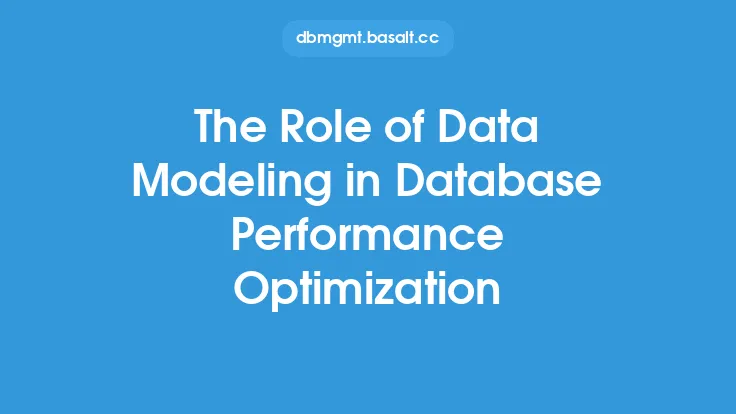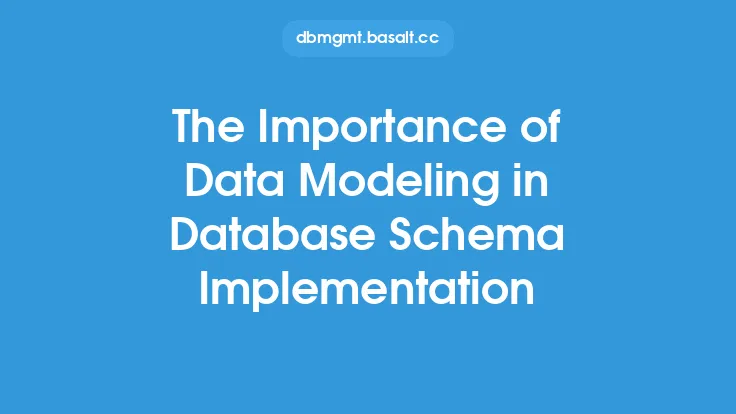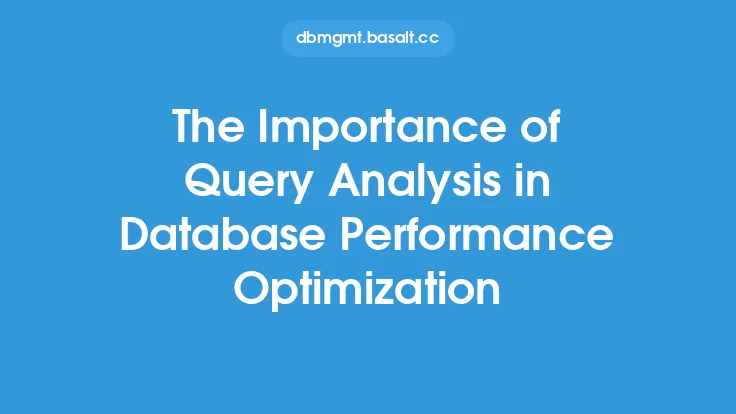Physical data modeling is a crucial step in the database design process that plays a significant role in optimizing database performance. It involves creating a detailed, physical representation of the database, including the structure of the data, the relationships between different data entities, and the storage and retrieval mechanisms. A well-designed physical data model can significantly improve the performance, scalability, and reliability of a database, while a poorly designed one can lead to performance bottlenecks, data inconsistencies, and other issues.
Introduction to Physical Data Modeling
Physical data modeling is a critical component of the database development lifecycle. It is the process of transforming a logical data model into a physical implementation that can be used to store and manage data. The physical data model takes into account the specific database management system (DBMS) being used, as well as the underlying hardware and software infrastructure. The goal of physical data modeling is to create a database design that is optimized for performance, scalability, and data integrity.
Benefits of Physical Data Modeling
Physical data modeling offers several benefits, including improved database performance, increased scalability, and enhanced data integrity. By creating a detailed, physical representation of the database, developers can identify potential performance bottlenecks and optimize the database design to minimize them. Physical data modeling also enables developers to design a database that is scalable and can handle increasing amounts of data and user traffic. Additionally, physical data modeling helps to ensure data integrity by defining the relationships between different data entities and enforcing data consistency rules.
Key Components of Physical Data Modeling
Physical data modeling involves several key components, including table design, indexing, partitioning, and storage management. Table design involves defining the structure of each table in the database, including the columns, data types, and relationships between tables. Indexing involves creating indexes on columns to improve query performance. Partitioning involves dividing large tables into smaller, more manageable pieces to improve performance and reduce storage requirements. Storage management involves defining the storage parameters for each table, including the storage device, file system, and backup and recovery procedures.
Physical Data Modeling Techniques
There are several physical data modeling techniques that can be used to optimize database performance, including denormalization, data compression, and data encryption. Denormalization involves storing data in a way that is optimized for query performance, rather than data consistency. Data compression involves reducing the size of data to improve storage efficiency and reduce the amount of data that needs to be transferred. Data encryption involves encrypting data to protect it from unauthorized access.
Best Practices for Physical Data Modeling
There are several best practices for physical data modeling that can help to ensure a well-designed database. These include using a standardized naming convention, defining clear and consistent data types, and using indexes and constraints to enforce data integrity. Additionally, developers should use partitioning and storage management techniques to optimize database performance and reduce storage requirements. It is also important to test and validate the physical data model to ensure that it meets the requirements of the application and is optimized for performance.
Tools and Technologies for Physical Data Modeling
There are several tools and technologies that can be used to support physical data modeling, including database design tools, data modeling software, and database management systems. Database design tools, such as Entity-Relationship diagrams, can be used to create a visual representation of the database design. Data modeling software, such as data modeling tools, can be used to create a detailed, physical representation of the database. Database management systems, such as relational databases, can be used to implement the physical data model and manage the data.
Challenges and Limitations of Physical Data Modeling
Physical data modeling can be a complex and challenging process, especially for large and complex databases. One of the main challenges is ensuring that the physical data model is optimized for performance, while also ensuring data integrity and consistency. Additionally, physical data modeling requires a deep understanding of the underlying database management system, as well as the hardware and software infrastructure. Another challenge is ensuring that the physical data model is scalable and can handle increasing amounts of data and user traffic.
Future of Physical Data Modeling
The future of physical data modeling is likely to be shaped by emerging trends and technologies, such as cloud computing, big data, and artificial intelligence. Cloud computing is likely to play a major role in the future of physical data modeling, as more and more organizations move their databases to the cloud. Big data is also likely to have a significant impact, as organizations struggle to manage and analyze large amounts of data. Artificial intelligence is also likely to play a role, as AI-powered tools and technologies are used to automate and optimize the physical data modeling process.
Conclusion
Physical data modeling is a critical component of the database development lifecycle that plays a significant role in optimizing database performance. By creating a detailed, physical representation of the database, developers can identify potential performance bottlenecks and optimize the database design to minimize them. Physical data modeling offers several benefits, including improved database performance, increased scalability, and enhanced data integrity. While there are several challenges and limitations to physical data modeling, the use of best practices, tools, and technologies can help to ensure a well-designed database that meets the requirements of the application and is optimized for performance.





